The B2B platform for the best purchasing descision. Identify and compare relevant B2B manufacturers, suppliers and retailers
Close
Filter
Result configuration
Continents
Select continent
Locations
Result types
Company type
Select company type
Industries
Select industry
Company status
Select company status preset
Number of employees
Min.
Max.
Founding year
Sofradir SAS
Châtenay-Malabry, France
A
- Employees
1986
Key takeaway
LYNRED provides infrared detectors that cater to diverse market needs, ensuring compatibility across various industries. Their products enhance the performance of thermal cameras, highlighting their commitment to customer satisfaction.
Reference
Core business
Lynred
Boston Electronics
Brookline, United States
B
1-10 Employees
-
Key takeaway
Boston Electronics offers a wide range of advanced electro-optical solutions, which may include infrared detectors. With over forty years of experience, the company provides knowledgeable application support to help customers find the best products for their needs.
Reference
Product
infared-detector - Boston Electronics
VIGO Photonics
Ożarów Mazowiecki, Poland
B
251-500 Employees
1987
Key takeaway
VIGO Photonics specializes in the production of infrared detectors, particularly in the MWIR and LWIR ranges, utilizing advanced technologies like MOCVD and MBE to manufacture high-quality detectors and modules. Their commitment to providing easy-to-use IR detectors spans wavelengths from 2 to 16 µm, achieving performance that meets fundamental limits without the need for cryocooling.
Reference
Product
Infrared detectors - Vigo
Looking for more accurate results?
Find the right companies for free by entering your custom query!
25M+ companies
250M+ products
Free to use
Cool Components
London, United Kingdom
A
1-10 Employees
2004
Key takeaway
The company, Cool Components, offers an Infrared Detector that reacts to infrared (IR) radiation, operating at 940nm. This device is suitable for various applications, including remote control and touch-less object sensing.
Reference
Product
Infrared Detector — Cool Components
DESCRIPTION An Infrared detector is a detector that reacts to infrared (IR) radiation. These simple devices operate at 940nm and work well for generic IR systems including remote control and touch-less object sensing. Using a simple ADC on any microcontroller will allow variable readings to be collected from the detect
Dexter Research Center Inc
Dexter, United States
B
51-100 Employees
1977
Key takeaway
Dexter Research Center is a leading provider of infrared thermopile detectors, offering a wide range of over 30 core products that combine superior sensitivity and reliability. Their Temperature Sensing Module delivers high-performance non-contact temperature sensing, making them a key player in the infrared detector market.
Reference
Core business
Infrared Sensor Manufacturers | Sensor Experts | Dexter Research Center

Global Sensor Technology Co., Ltd (GST)
Wuhan, China
D
501-1000 Employees
2013
Key takeaway
Global Sensor Technology is a leading manufacturer of infrared detectors, offering high-performance uncooled and cooled thermal imaging detectors. Their innovative products, including state-of-the-art VOx uncooled detectors and MCT and T2SL cooled detectors, are designed for various applications, enhancing security and monitoring in low-light conditions.
Reference
Product
Uncooled Infrared Detectors | GSTiR
ZudSec Global
Shenzhen, China
D
251-500 Employees
1999
Key takeaway
ZUDSEC specializes in providing advanced security solutions, including infrared PIR motion detectors, which are part of their commitment to safety and comfort through innovative technologies. Their products are recognized for high quality and precision, making them a reliable choice for smart home and security applications.
Reference
Product
Infrared PIR Motion Detector
Infrared Laboratories Inc.
United States
B
11-50 Employees
1967
Key takeaway
IRLabs specializes in infrared detection and has designed and produced over 4,500 IR detection systems, including bolometers and photodetectors, since its inception in 1967. Their expertise supports various scientific fields, making them a key player in providing advanced IR detection solutions.
Reference
Product
Bolometers and IR Detectors - Infrared Laboratories
Infrared Laboratories supplies cryogen-free and cryogenic bolometers and IR detectors for research, far-IR detection, and OEM applications.

CMOS IR GmbH
Erfurt, Germany
A
11-50 Employees
2017
Key takeaway
Micro-Hybrid Electronic offers thermopile infrared detector chips that are essential for gas measurement and various industrial applications. Their product line includes advanced CMOS IR sensor chips integrated into thermopile detectors, highlighting their focus on future-generation infrared components.
Reference
Core business
Home - CMOS-IR - future generation components

Yantai IRay Technology Co., Ltd.
Yantai, China
D
1001-5000 Employees
2009
Key takeaway
InfiRay® specializes in developing infrared thermal imaging technologies and manufacturing related products, including infrared detectors. Their RTC3122W WLP Detectors of Infrared Waves are designed for micro-module applications, highlighting features such as affordability, low power consumption, and compactness.
Reference
Product
InfiRay RTC3122W WLP Detectors of Infrared Waves
RTC3122W WLP Detectors of Infrared Waves is suitable for micro-module applications with features such as affordability, low power consumption, compactness, lightweight, and long service life. Contact InfiRay now!
Technologies which have been searched by others and may be interesting for you:
A selection of suitable products and services provided by verified companies according to your search.

Service
Detector & Cooler Maintenance, Repaır and Calibration
Go to product
An infrared detector is a device designed to sense infrared radiation, typically emitted by objects based on their temperature. These detectors convert infrared energy into an electrical signal, allowing for the measurement and analysis of thermal emissions. Infrared detectors are widely used in various applications, such as thermal imaging, night vision, and environmental monitoring. Their ability to detect heat makes them essential in fields like security, automotive, and industrial automation, where monitoring temperature changes can provide critical insights.
Infrared detectors operate by sensing infrared radiation, which is emitted by all objects based on their temperature. When infrared radiation strikes the detector, it causes a change in the electrical properties of the material used in the sensor. This change generates a measurable signal, which can be processed to determine the intensity and wavelength of the infrared radiation. The most common types of infrared detectors include thermocouples, pyroelectric sensors, and photoconductive materials. Each type utilizes different principles to detect infrared signals, such as temperature changes or photon absorption. The effective conversion of infrared energy into electrical signals makes these detectors essential in various applications, including thermal imaging, motion detection, and environmental monitoring.
1. Temperature Measurement
Infrared detectors are widely used in temperature measurement devices. They enable non-contact temperature readings by detecting the infrared radiation emitted by objects. This application is crucial in various industries, including manufacturing and healthcare, where precise temperature control is essential.
2. Night Vision Systems
In military and security applications, infrared detectors play a vital role in night vision systems. They enhance visibility in low-light conditions by capturing infrared radiation from objects, allowing for effective surveillance and reconnaissance operations.
3. Gas Detection
Infrared detectors are utilized for detecting gases in various environments. They can identify specific gases by measuring the absorption of infrared light at certain wavelengths. This application is critical in environmental monitoring and safety systems across industries.
4. Motion Detection
These detectors are commonly found in motion detection systems, such as security alarms and automated lighting. By sensing the infrared radiation emitted by moving objects, they enable prompt responses to potential intrusions or help in energy conservation by activating lights only when needed.
1. High Sensitivity
Infrared detectors are known for their high sensitivity to infrared radiation, allowing them to detect even low levels of heat emitted by objects. This capability makes them ideal for applications in surveillance, night vision, and thermal imaging.
2. Non-Contact Measurement
These detectors enable non-contact temperature measurement, which is particularly beneficial in scenarios where direct contact is impractical or could affect the measurement, such as in medical diagnostics or industrial monitoring.
3. Versatility
Infrared detectors can be employed in various fields, including automotive, aerospace, and environmental monitoring. Their adaptability to different applications enhances their utility across multiple industries.
4. Fast Response Time
The technology behind infrared detectors allows for rapid response times, making them suitable for dynamic environments where quick detection of temperature changes is essential.
5. Low Power Consumption
Many infrared detectors operate efficiently with low power requirements, which is advantageous for portable devices and battery-operated systems, contributing to longer operational life.
When selecting an infrared detector, several critical factors must be taken into account. Detector Type Different types of infrared detectors, such as thermal and quantum detectors, have distinct operational principles and applications. Understanding the specific requirements of your project will guide you in choosing the most suitable type. Wavelength Sensitivity The sensitivity range of the infrared detector is essential for ensuring it can detect the desired wavelengths. Evaluating the spectral response curve of the detector helps determine its effectiveness for specific applications, such as night vision or thermal imaging. Response Time For applications requiring rapid detection, the response time of the infrared detector is crucial. Faster response times can enhance performance in dynamic environments, making this a vital consideration. Operating Temperature Range The environment in which the detector will operate influences its performance. Ensure the chosen infrared detector can function effectively within the expected temperature range of the application. Cost and Availability Budget constraints and the availability of the infrared detector are practical considerations. Assessing the total cost of ownership, including maintenance and potential upgrades, can lead to a more informed decision.
Some interesting numbers and facts about your company results for Infrared Detector
| Country with most fitting companies | United States |
| Amount of fitting manufacturers | 5964 |
| Amount of suitable service providers | 3526 |
| Average amount of employees | 251-500 |
| Oldest suiting company | 1967 |
| Youngest suiting company | 2017 |
20%
40%
60%
80%
Some interesting questions that has been asked about the results you have just received for Infrared Detector
What are related technologies to Infrared Detector?
Based on our calculations related technologies to Infrared Detector are Magnets, Printed Electronics, Industrial Amplifiers, Electronic Transducers, Electronic Oscillators
Which industries are mostly working on Infrared Detector?
The most represented industries which are working in Infrared Detector are Electronics and Electrical engineering, Other, IT, Software and Services, Defense, Automation
How does ensun find these Infrared Detector Suppliers?
ensun uses an advanced search and ranking system capable of sifting through millions of companies and hundreds of millions of products and services to identify suitable matches. This is achieved by leveraging cutting-edge technologies, including Artificial Intelligence.